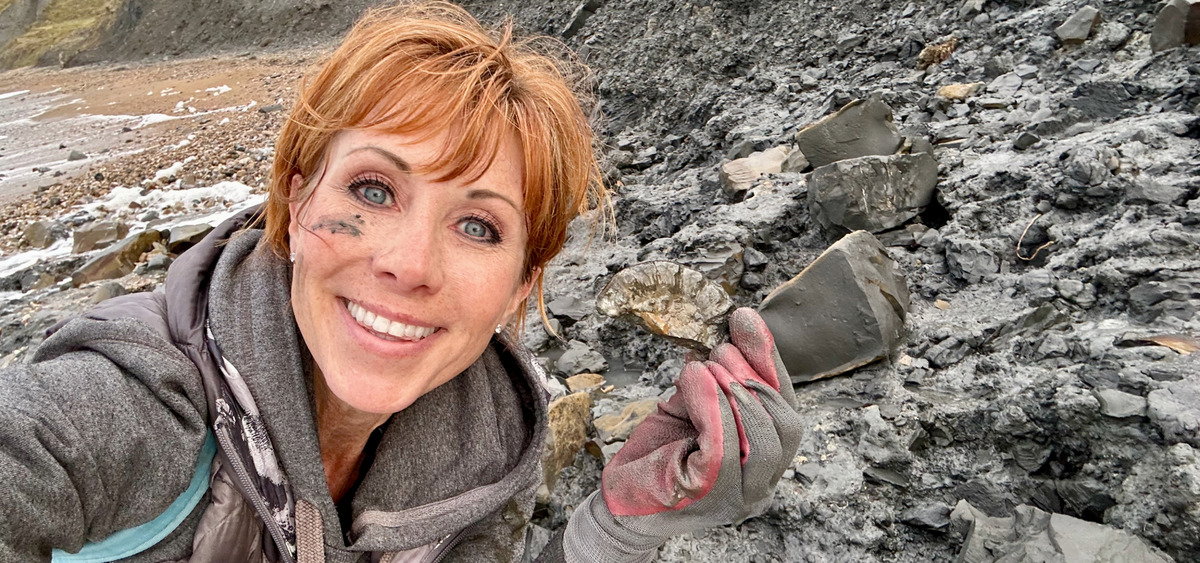Fossil Hunting on England’s Jurassic and Dinosaur Coasts
When it comes to unearthing 185-million-year-old dinosaur bones and fossils along England’s Jurassic and Dinosaur coasts you do not have to be a paleontologist to do it.
During the tidal changes, fossils fall out of the cliffs making a trip to search for them a fun, history-filled way to enjoy England’s coastlines. With a little insight into where and when to go, what to look for, and how to stay safe doing it you can enjoy finding nature’s hidden treasures while on vacation.

The Jurassic Coast is to the south in Dorset and Devon and the Dinosaur Coast is in the north in Yorkshire. These coastlines are magnets for fossil hunters. The good news is that both expert fossil hunters (the ones who collect the cool finds to sell in gem shops) and first-time amateurs all have an equal shot at collecting museum-quality fossils and dinosaur bones.
I’ve searched for fossils on both coasts multiple times and always walk away with exciting new scientific knowledge and yes, cool finds. I never tire of admiring the iron pyrite ammonites, belemnites, fossilized plants, and Jurassic seashells that I’ve added to my collection.
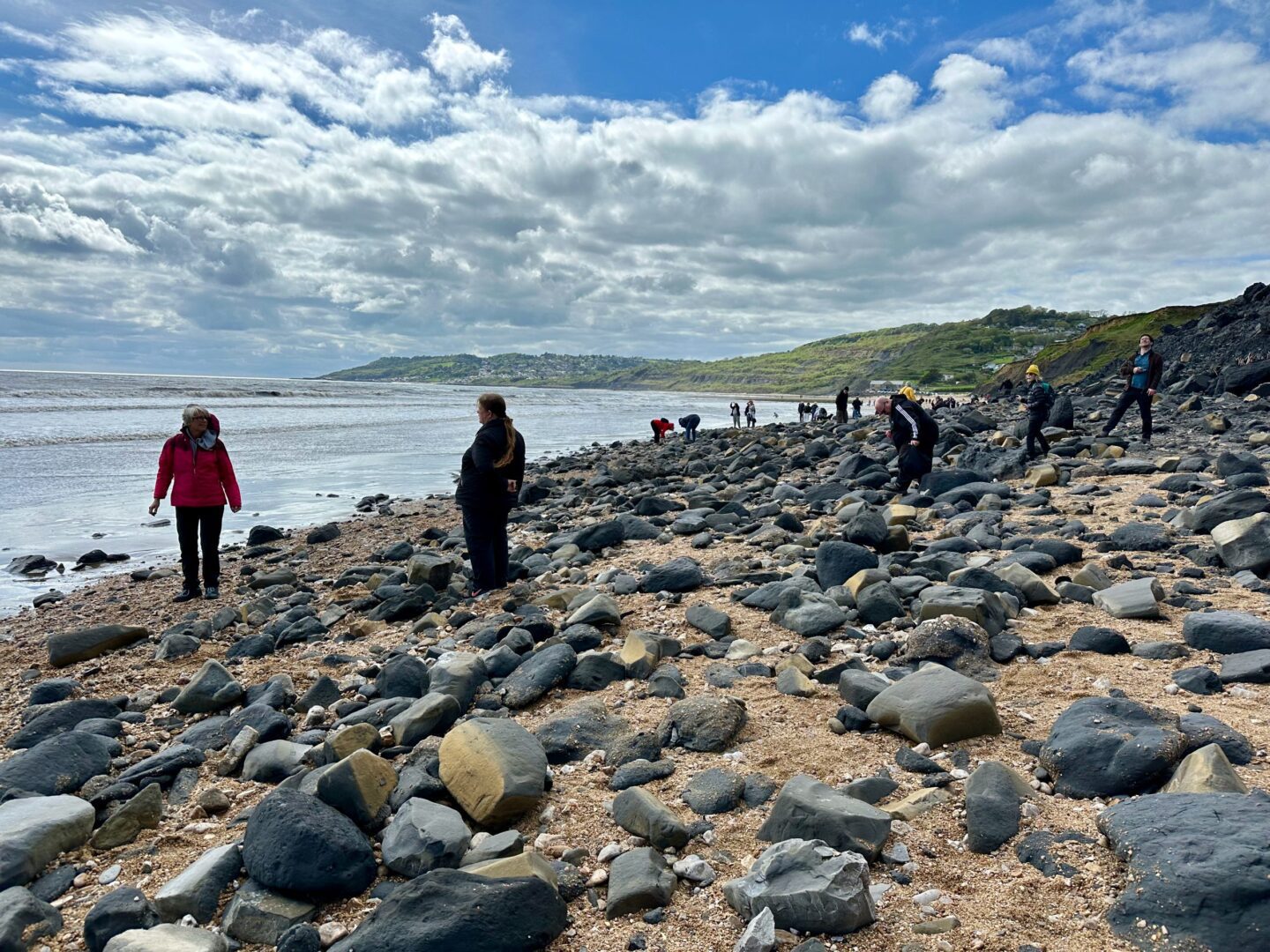
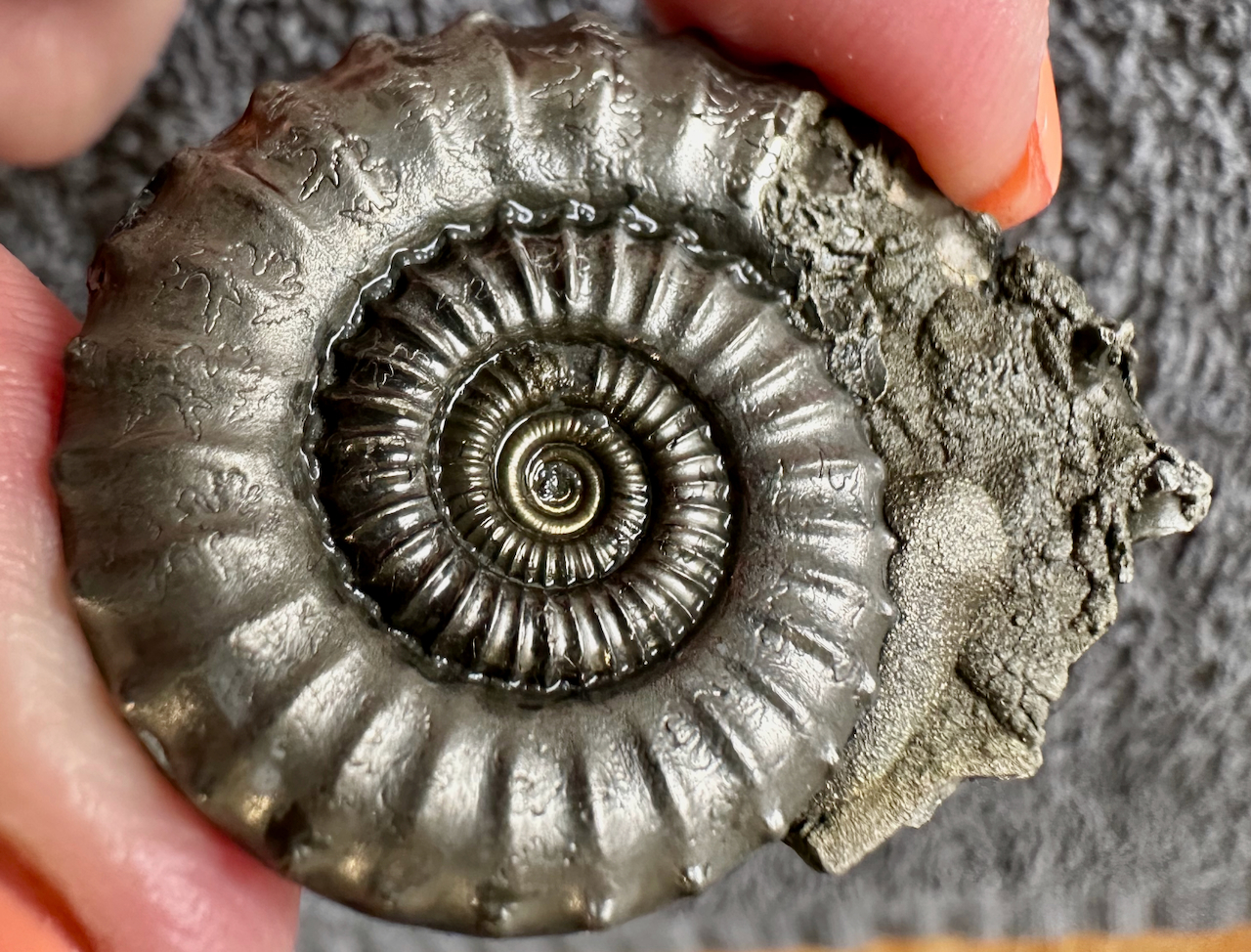
The Jurassic Coast to the south is a 95-mile stretch of fossilized opportunities. The area is a UNESCO World Heritage Site due to its vast rocks, fossils, and rugged landscapes. There’s over 185-million years of geological history encased within the rocks and sediment offering relics from the Triassic, Jurassic and Cretaceous Periods.
While there is no shortage of locations to base from along this coast, two of the most productive areas are Lyme Regis and Charmouth. They are also two of the most accessible options for getting onto the beach and are good places to start if you’ve never been to the area. These two towns are separated by a few miles, so it is easy to enjoy fossil hunting on the beaches of both during the same visit.
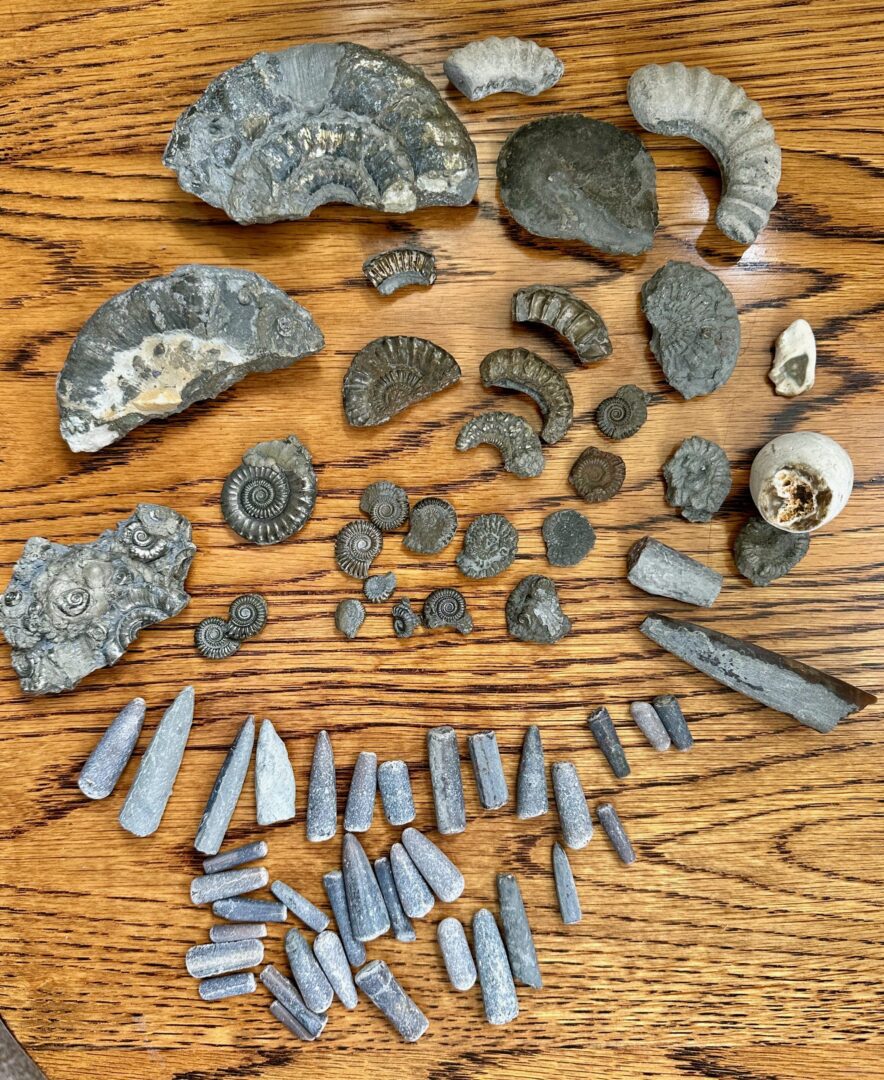
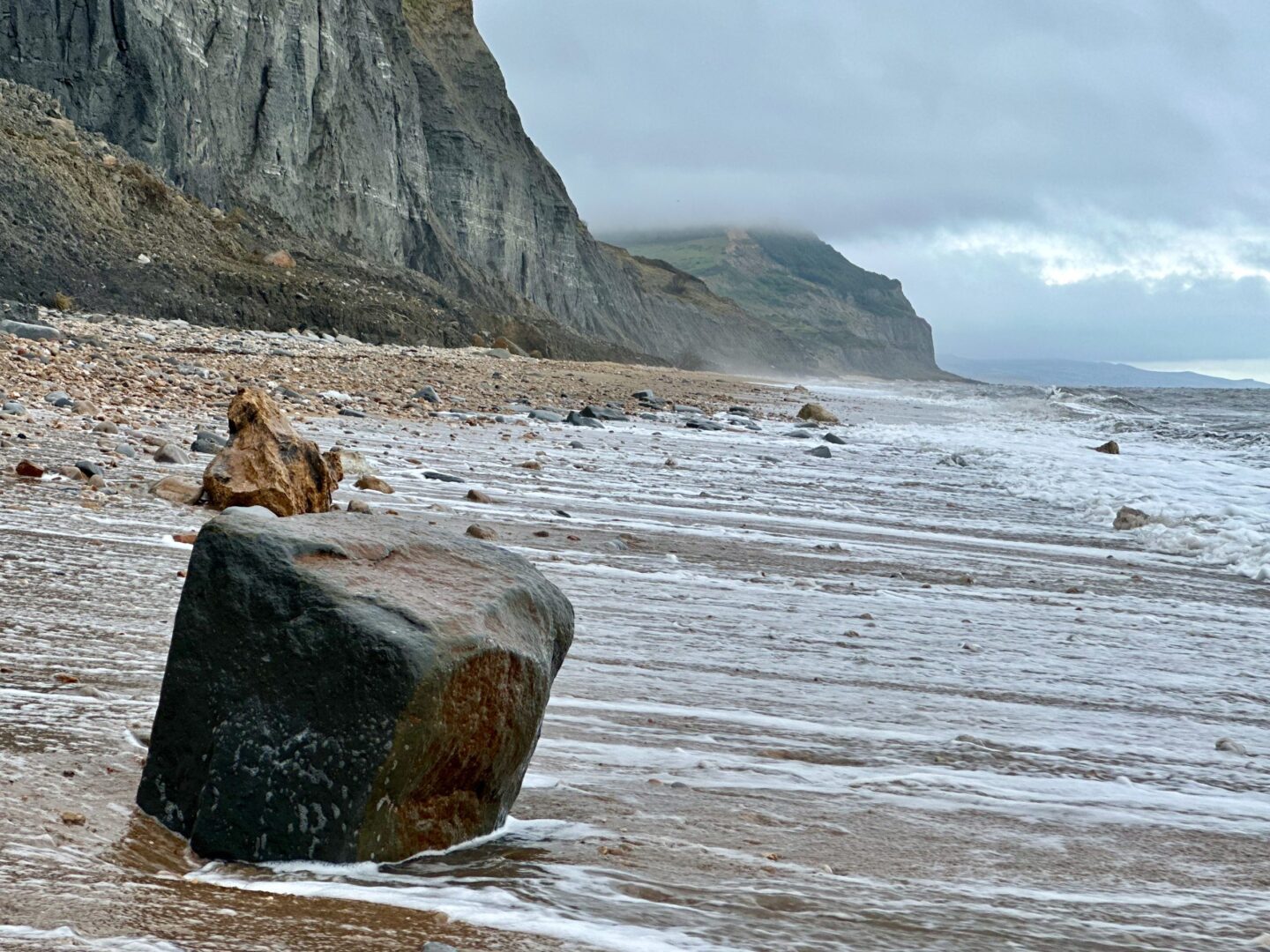
Winter is an optimal time to fossil hunt along the Jurassic coast but you can find fossils any time of the year. The winter months have fewer people, and the harsher weather means a higher rate of erosion to the clay and mud, so fossils wash out more regularly, but fossils wash out during every tide change throughout the year.
Some of the things you can find along this coast are iron pyrite ammonites, belemnites, fossilized seashells, and sea urchins and, if you win the fossil lottery during your visit you could find fragments of ichthyosaur backbones.
It is a good idea to start your fossil-hunting adventure by visiting the Charmouth Heritage Coast Centre or the Lyme Regis Museum for an overview of what to look for in the area and get local information from the experts. Both places offer guided fossil walks throughout the year. It’s best to register early as they fill up quickly.
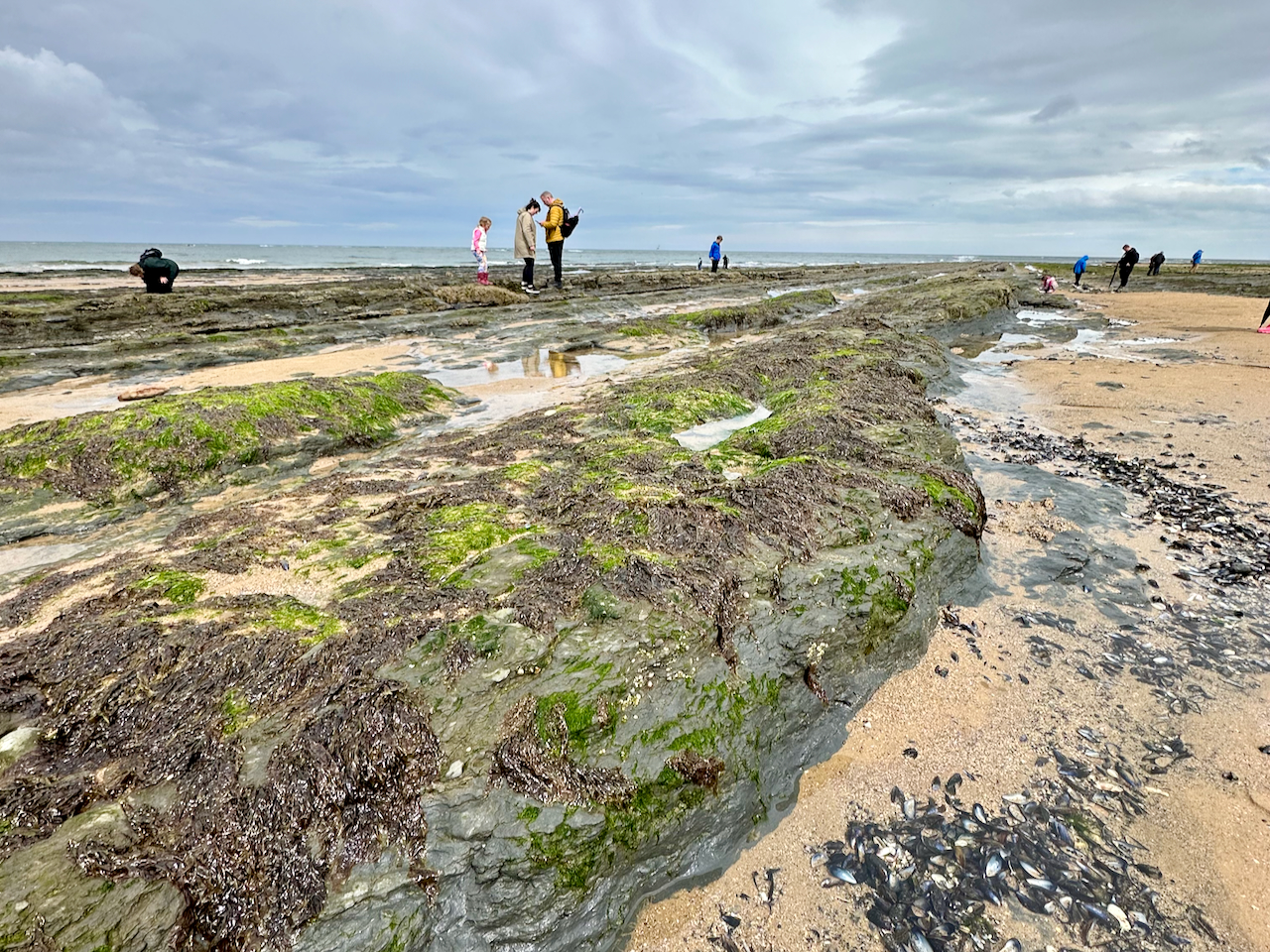
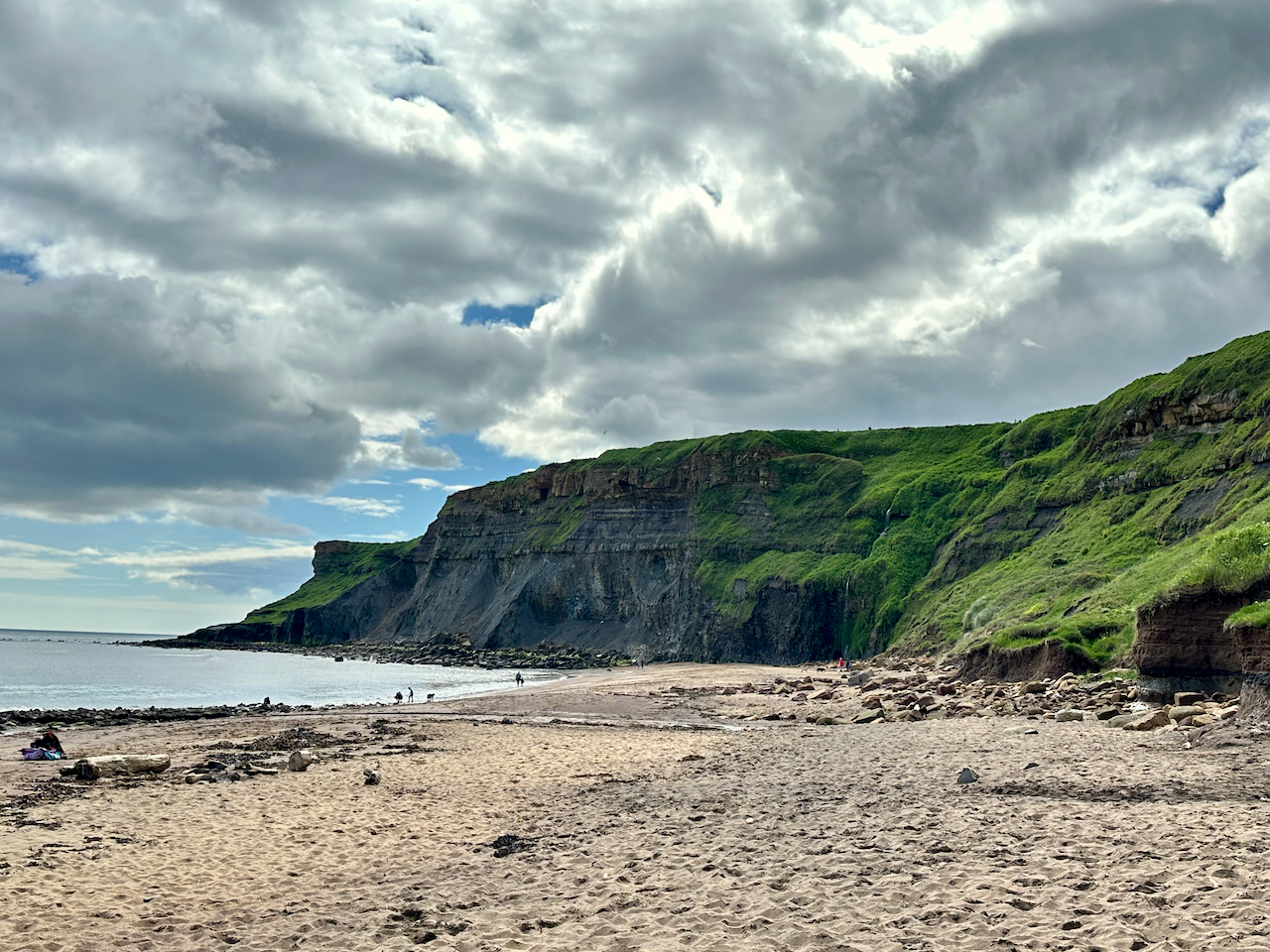
On England’s northeast Yorkshire coastline is the Dinosaur Coast. There’s no shortage of towns with easy beach access from which to base but some of the most popular are Whitby, Robin Hood’s Bay, and Port Mulgrave.
While the Yorkshire coast also unearths ammonites, belemnites, and fossilized shells you can also find Jurassic plants and fossilized remains of reptiles. The town of Scarborough is worth visiting for fossil hunting and seeing the more than 50 dinosaur footprints discovered and preserved in the cliffs. Some of the other beaches to explore for fossils are Staithes, Saltwick Bay, Runswick Bay, and Redcar.
If you plan to visit during the early summer, look up the annual Yorkshire Fossil Festival. It is a trove of access to paleontologists, fossil hunters, and educational workshops.
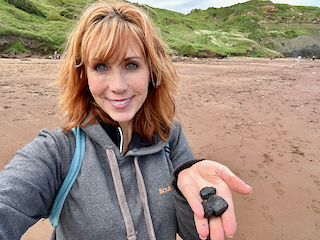
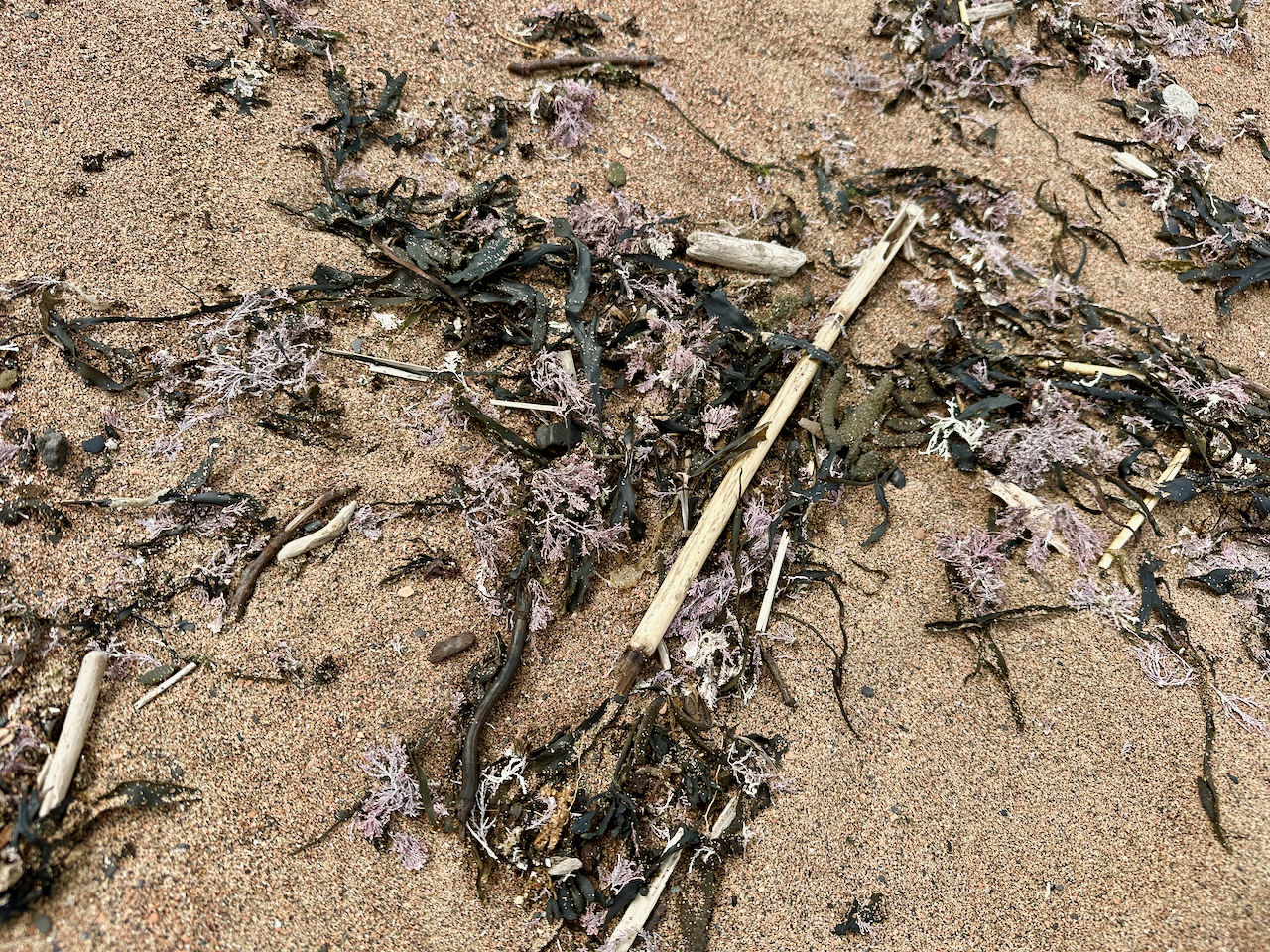
Another gem to find along Yorkshire’s Dinosaur Coast is Jet stone. Also referred to as Whitby Jet stone, it is a gemstone that washes up from the sea. Though it is technically fossilized wood, Jet stone has become a treasured resource for jewelry. Have you heard the term “jet black”? It comes from Jet stone. You can easily find Jet stone along the beaches, but it takes a keen eye to know what to look for as it is usually tangled within washed-up plants and easily confused with coal found in the area.
Insider Tips:
- When to go. The best time to go fossil hunting is about two hours before low tide. It is essential that you know the tidal changes and you should not venture out during a rising tide.
- What to take. I prefer to take a small hand rake or something to stir mud and rocks on the beach as well as a hammer. It is easy to find fossils on both coasts with no equipment at all. It takes time to learn which rocks are worth hammering so unless you have some advance knowledge of what to look for, don’t bother. Take some ziplock bags for your finds, a backpack, water, sunscreen and hand wipes for when you finish.
- What to wear. You will get dirty, muddy and possibly wet. Wear suitable clothes in layers with a waterproof outer layer to stay dry and warm as weather can shift quickly. Wear boots with good traction as rocks are slippery as the tide recedes. I prefer to bring garden gloves to dig in the mud but that is optional. Take a change of shoes and plan to leave muddy boots in the back of the car.
- Guided fossil walks. If you are new to fossil hunting, I recommend hiring an expert fossil guide or signing up for a free fossil walk from a local museum or visitors center. This will save you a lot of time guessing what to look for. A guide can show you where to look and how to open rocks. They can also show you how to search using the best tool you have – your eyes.
- Safety first. These coasts are ripe with fossils because the mud and sediment are always shifting so safety must be your top priority. Avoid walking too close to the cliffs, do not climb on the cliffs, and be aware that fresh rockfalls and landslides can happen at any moment.
- Have fun. Fossil hunting is a fun and free way to enjoy some of nature’s coolest gifts from nearly 200 million years ago. Take time to enjoy the process and experience.
